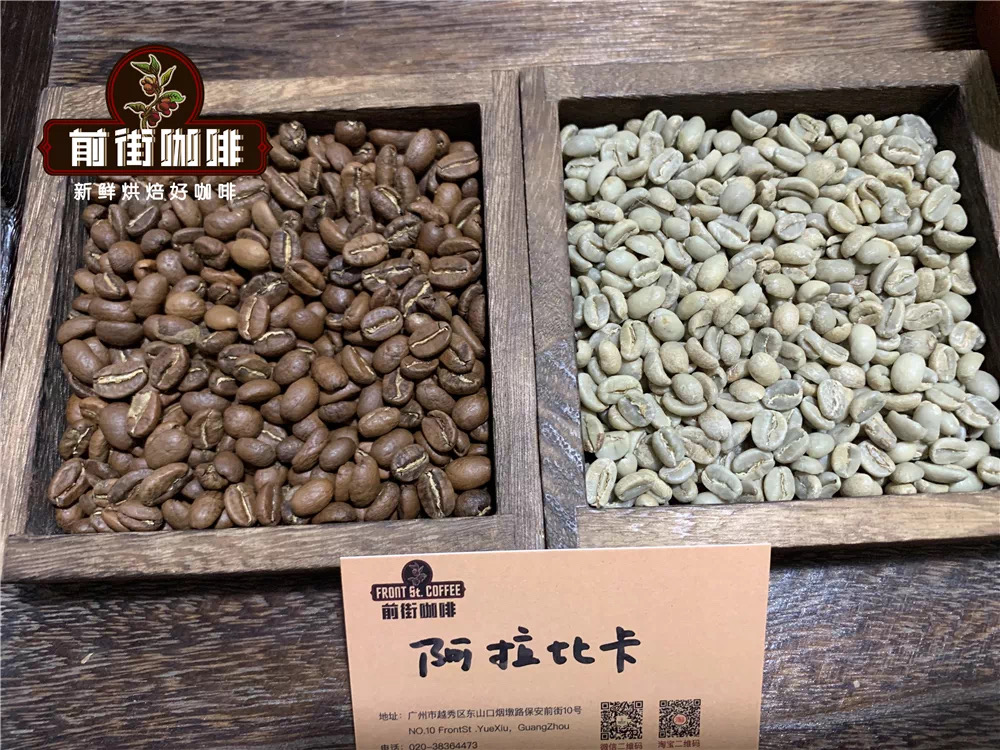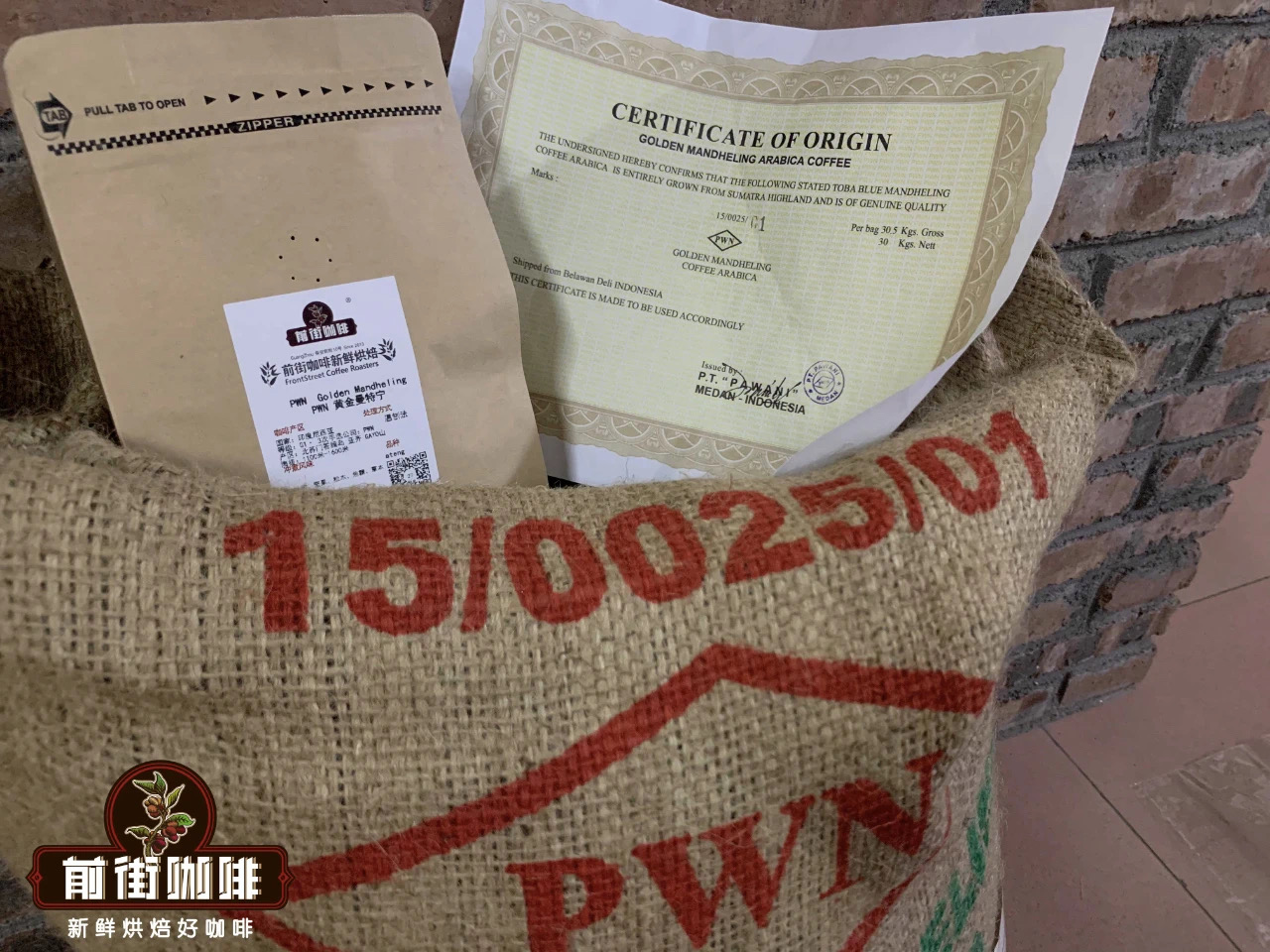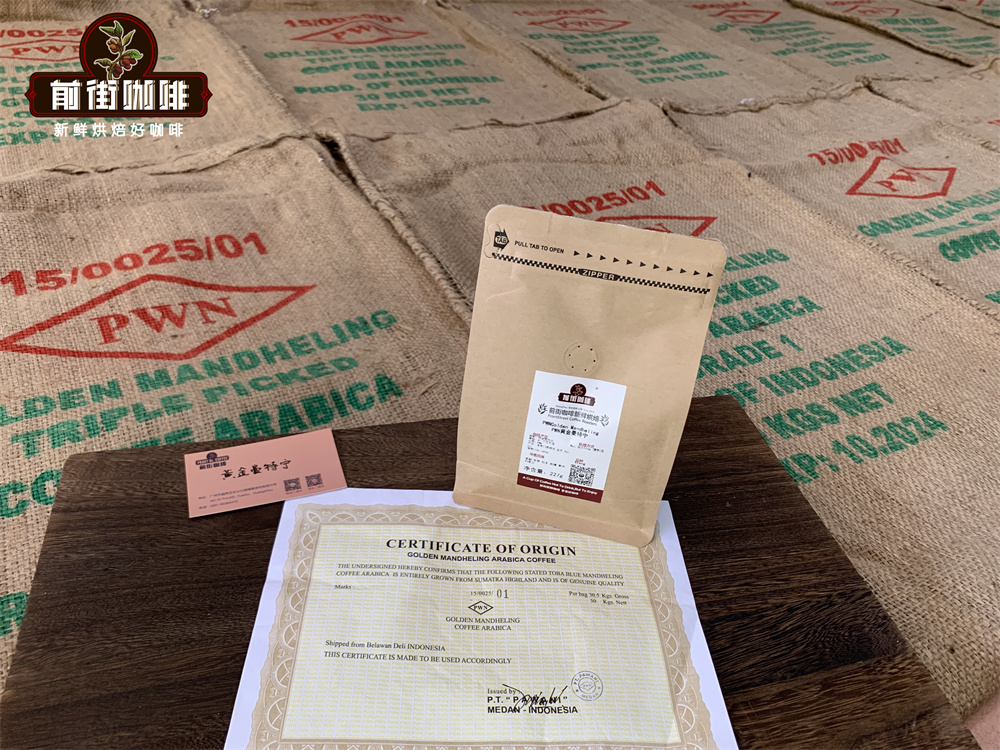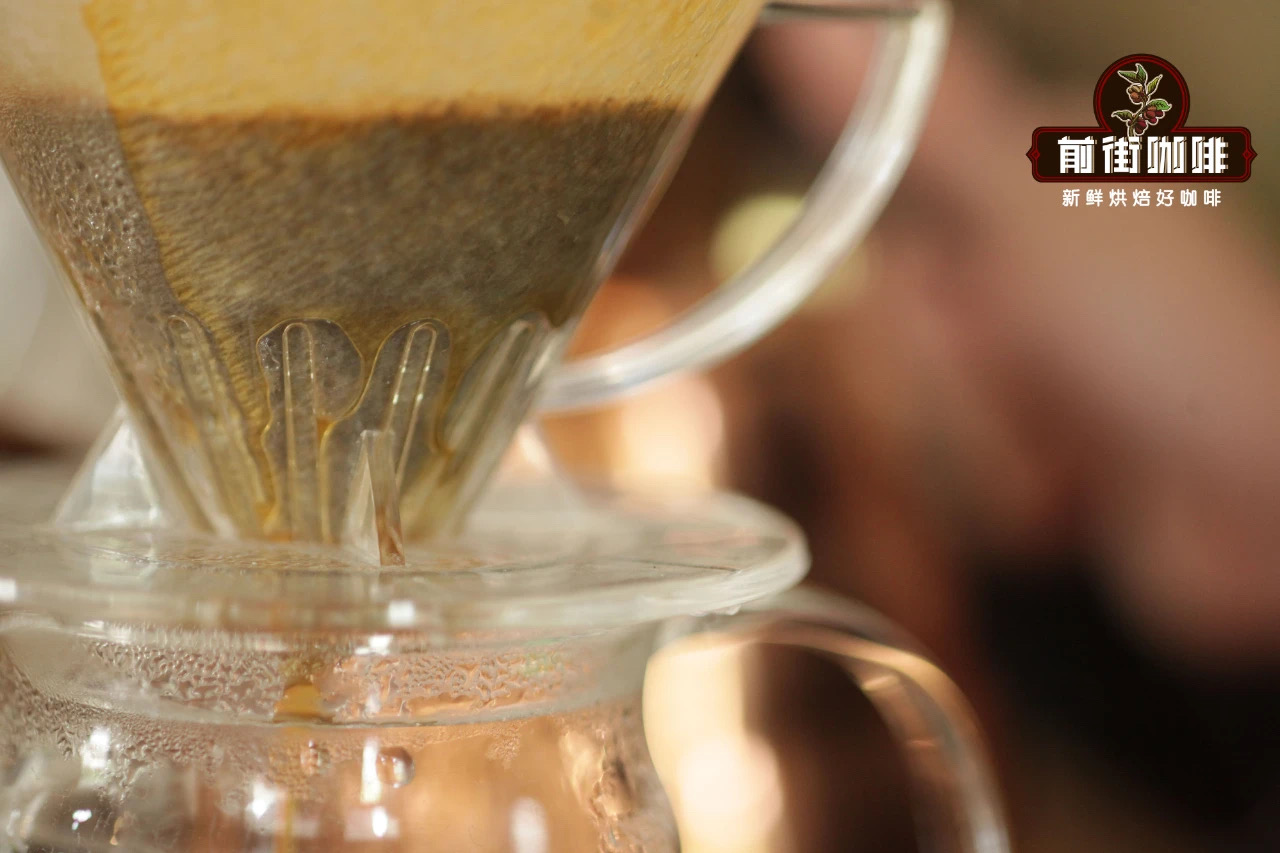The difference between Indonesian Manning and Arabica Coffee PWN Gold Manning Coffee Bean flavor and taste characteristics
If you are new to coffee, you may not know much about coffee beans. The terminology used on coffee packaging is not familiar, but it is common to see labels in large coffee chains claiming that "100 percent Arabica coffee" is used in the store. You may be wondering what "Arabica coffee" means. For some coffee lovers who like mantinin, they may not know much about the difference between mantinin coffee and Arabica. To explain this, Front Street believes it is first necessary to understand what Arabica coffee is.

A review of Front Street Coffee's records shows that the coffee plant Coffea is a genus of about 100 species, but only two are commonly cited-Arabica and Robusta. The most striking difference between species that affect bean physiology and flavor is the altitude at which they grow. Generally speaking, higher altitude = better flavor. Front Street Coffee considers Arabica coffee to be the most popular type of coffee in the world today, and it is, in fact, Arabica coffee beans account for more than 60% of all coffee beans produced in the world.
High-quality Arabica coffee beans are grown at higher altitudes (about 550-1920 meters). Higher altitudes and more climate change make coffee fruit grow more slowly. These environmental conditions allow coffee fruits and beans more time to grow, resulting in a more refined flavor. The optimum temperature for Arabica coffee is between 19 and 21 degrees, and the highest temperature that can be tolerated is an average annual temperature of 24 degrees. Subtropical regions are ideal for growing Arabica coffee. Fertile volcanic soils are also one of the most suitable growing environments for Arabica coffee beans, and volcanic soils have a range of physical, chemical, and mineral properties that make them agriculturally superior to other soil types. The fertility of volcanic soils is important for the development of kafari plants, not only because the low density and stable but porous structure of volcanic soils enable the soil to retain moisture effectively and make it relatively drought-resistant. Because of their high permeability, plant roots can also grow deep and drain easily, which prevents the roots from becoming too wet and rotting.

But Arabica coffee is highly susceptible to environmental influences, compared with Robusta beans, which are not only hardy but also immune to many diseases. Robusta is widely used to blend espresso or instant coffee because of its strong flavor due to its relatively harsh growing environment. Robusta coffee beans are added to commercial coffee blends in Front Street Coffee in order to increase the fat of espresso coffee and enrich the flavor of coffee. Robusta coffee is often thought to have bitter, rubbery, grainy flavors. Robusta beans contain twice as much caffeine as Arabica, and more caffeine and chlorogenic acid can give brewed coffee an unwanted taste and affect its flavor. But not all Robusta beans are like this, and Front Street Coffee considers high-quality Robusta beans to often lack these negative flavors. So is mantinin arabica or robusta? Front Street Coffee Customers familiar with the flavor of mantling coffee know that mantling beans will have their own unique herbal flavor and even have a customer reaction like earthy taste. However, its strong body, smooth taste and rich caramel taste still conquer many coffee lovers 'taste buds. To know the answer to this question, Front Street Coffee thinks it's best to learn more about the history and origins of mantning coffee. Sumatra mantning coffee from Indonesia is one of the most unique coffees of all. While most coffees are named after the region or country where they are grown, Mantelin coffee is named after the Mantelin people who traditionally grow and process coffee beans. After looking up Front Street Coffee, legend has it that during World War II, a Japanese soldier stationed in Sumatra asked a local Sumatra where his coffee came from. The Sumerians mistakenly thought they were asking about their origins and replied,"Mantelin." Later, Japanese soldiers returned to Japan but had been obsessed with Indonesian coffee, so they asked local coffee traders to buy this coffee. Since then, Mantenin Coffee has been spread. The Indonesian coffee trader is the famous PWN (PT.Pawani) coffee green bean trader.

PWN Gold Mandning Factory Certificate and Raw Bean Sack for Front Street Coffee
Front Street Coffee Gold Mantelin is imported from PWN. There are plenty of gold mantnings on the market, but be aware that many of them are counterfeit. How do you tell the difference? Front Street Coffee gives you two tips: a raw bean bag with the PWN logo and a factory certificate for PWN Gold Mantelin. As mentioned above, PWN is Indonesia's most famous green coffee bean purchasing company, and naturally the best Mantenin coffee has been acquired by it. Not only that, PWN registered Gold Mandolin as a trademark, so only PWN Gold Mandolin is authentic Gold Mandolin.

The main cultivation areas of Mantenin coffee are mainly North Sumatra, including Lindong, Sidikalang, Tanah Karo, Simalungun, etc. In 2020, the new pre-season street coffee gold mantinin will be transferred from the original Tawa Lake production area to the further north Aceh Gayou Mountain production area. Why does PWN choose the Gayou Mountain production area? Qianjie Coffee believes that although the coffee planting area is on the hillside and the planting height is between 1100 and 1600 meters, the quality of coffee beans is excellent, but due to the unstable political situation, it is difficult to export the coffee of Jiayou Mountain. But this year Indonesia is peaceful and exports are convenient. Not only that, coffee cultivation in Aceh has also been developed and the quality is better guaranteed.

Not only in the producing area, but also in the new season of 2020, the beans of gold mantning in Front Street Coffee have changed. From the original iron card to the present ateng. What kind of beans is Ateng? It's actually Indonesian for katim coffee. See here you should understand it! Mantenin coffee belongs to Arabica coffee, of course, mantenin coffee beans are not only katim and iron pickup, but also we are familiar with kadura, tim and so on. There are five types of mantinin coffee beans on Front Street. They are: Gold mantinin, Aged mantinin, Lindon mantinin, Tiger mantinin Sumatra Wahana Manor Sun-baked mantinin.
So how does the Front Street Coffee Gold Mandolin brew? Here are the production parameters of Front Street Coffee:

Filter cup: KONO
Water temperature: 88 degrees
Grindability: medium coarse (No. 20 standard sieve pass rate 75%)
Powder water ratio: 1:15
Baking Degree: Medium Deep Baking
Brewing method: staged extraction
Brewing method: the first injection of 30g of water, 30s stewing, injection to 120 g of water cut off water, wait for the powder bed water to drop to half, then slowly inject water until 225g of water, until the water in the filter cup flows into the next pot, remove the filter cup. The extraction time is about 2 minutes.

Professional coffee knowledge exchange More coffee bean information Please pay attention to coffee workshop (Weixin Official Accounts cafe_style)
More fine coffee beans, please add private WeChat Qianjie Coffee, WeChat: kaixinguoguo0925
Important Notice :
前街咖啡 FrontStreet Coffee has moved to new addredd:
FrontStreet Coffee Address: 315,Donghua East Road,GuangZhou
Tel:020 38364473
- Prev

Introduction to the taste of grinding scale varieties of Ethiopian Sidamo coffee flavor description
Ethiopian Sidamo Coffee Flavor description method Grinding scale varieties taste introduction Coffee is Ethiopia's most important export cash crop and the main source of Ethiopia's foreign exchange earnings. Ethiopia's coffee exports account for about 3% of the world market, making it the eighth largest coffee exporter in the world. Coffee exports increased steadily from 58000 tons in 1990 to 1995-1996.
- Next

Introduction to the grinding scale of Panamanian coffee beans produced by the method of describing taste and flavor
Description of the characteristics of Panamanian coffee beans, taste and flavor description of the grinding scale of the production area (flower fragrance, sweet orange, pineapple, pineapple, vanilla, lively flavor). The story of Hartman, the bean used by several contestants in the competition, is as legendary as its coffee. Hartman Manor is located in Chilidge, Santa Clara. The founder's name is Ellis Strauss.
Related
- Detailed explanation of Jadeite planting Land in Panamanian Jadeite Manor introduction to the grading system of Jadeite competitive bidding, Red bid, Green bid and Rose Summer
- Story of Coffee planting in Brenka region of Costa Rica Stonehenge Manor anaerobic heavy honey treatment of flavor mouth
- What's on the barrel of Blue Mountain Coffee beans?
- Can American coffee also pull flowers? How to use hot American style to pull out a good-looking pattern?
- Can you make a cold extract with coffee beans? What is the right proportion for cold-extracted coffee formula?
- Indonesian PWN Gold Mandrine Coffee Origin Features Flavor How to Chong? Mandolin coffee is American.
- A brief introduction to the flavor characteristics of Brazilian yellow bourbon coffee beans
- What is the effect of different water quality on the flavor of cold-extracted coffee? What kind of water is best for brewing coffee?
- Why do you think of Rose Summer whenever you mention Panamanian coffee?
- Introduction to the characteristics of authentic blue mountain coffee bean producing areas? What is the CIB Coffee Authority in Jamaica?

